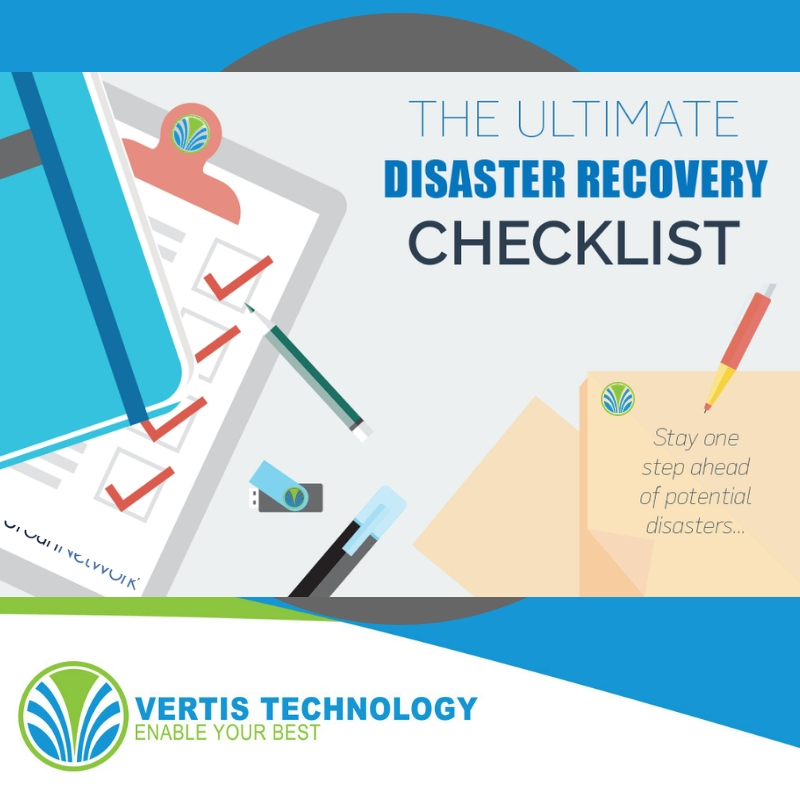DISASTER RECOVERY CHECKLIST

BEFORE
Prepare yourself before disaster strikes.
When it comes to data backup and disaster recovery (BDR), being prepared for potential disasters is key to keep your business running.
It’s not only important to have a disaster recovery solution you trust, but to make sure you test it as well.
Keep this DR checklist on hand.
Prior to a disaster ever occurring (and unfortunately it’s a matter of when and not if) ask yourself the following:
- Do you have a disaster recovery solution in place?
- Do you trust it?
- When was the last time your backup was tested?
- How long does it take to recover from your current backup solution?
- How long can you realistically be down? 1 hour? 1 day?
- What is the financial cost of downtime to your business?
- When a disaster occurs, is there an offsite copy?
AFTER
Assess the problem and its impact on your business
The disaster moment has occurred – time to walk through the following steps:
Every disaster is different. Before doing anything, understand the underlying issue and how it may affect you.
- Is the issue local to one machine, or does it affect your entire system?
- Have flies been deleted or are servers/workstations down?
Establish recovery goals
Recovery is what makes a BDR solution different from a simple backup product. Plan out your road to recovery.
- Restore the system, the data, or both? Should time be spent recovering flies and folders before system recovery?
- Identify critical systems and prioritise recovery tasks.
- What date/time should you recover from?
- How long can your recovery take?
Select the appropriate recovery type(s)
To get to your “road to recovery”, the appropriate recovery procedure must be followed. Think about which approach will best get you to your end goal.
- File restore or Local virtualisation or Off-site virtualisation.
Verify the recovery and confirm functionality with users
Recovery is what makes a BDR solution different from a simple backup product. Plan out your road to recovery.
- Restore the system, the data, or both? Should time be spent recovering flies and folders before system recovery?
- Identify critical systems and prioritise recovery tasks.
- What date/time should you recover from?
- How long can your recovery take?
Restore the original system(s), if needed
If the original system(s) needs to be restored, decide which restoration process will work best.
- Bare metal restore or Virtual machine restore.
Self-assess afterwards
After it’s all said and done, take a step back and think about it:
How well did your team do? What could you have done differently?
- What precipitated the failure?
- What ongoing issues need to addressed?
- What can be done better in future DR scenarios
Don’t let your business become another statistic.
The best way to make sure your business’ data is protected against a natural disaster, cyber-attack, hardware failure or human error is to be prepared.
Our business continuity solution is designed to quickly revive your network should any downtime occur, and help get your employees operating productively in almost no time at all.
